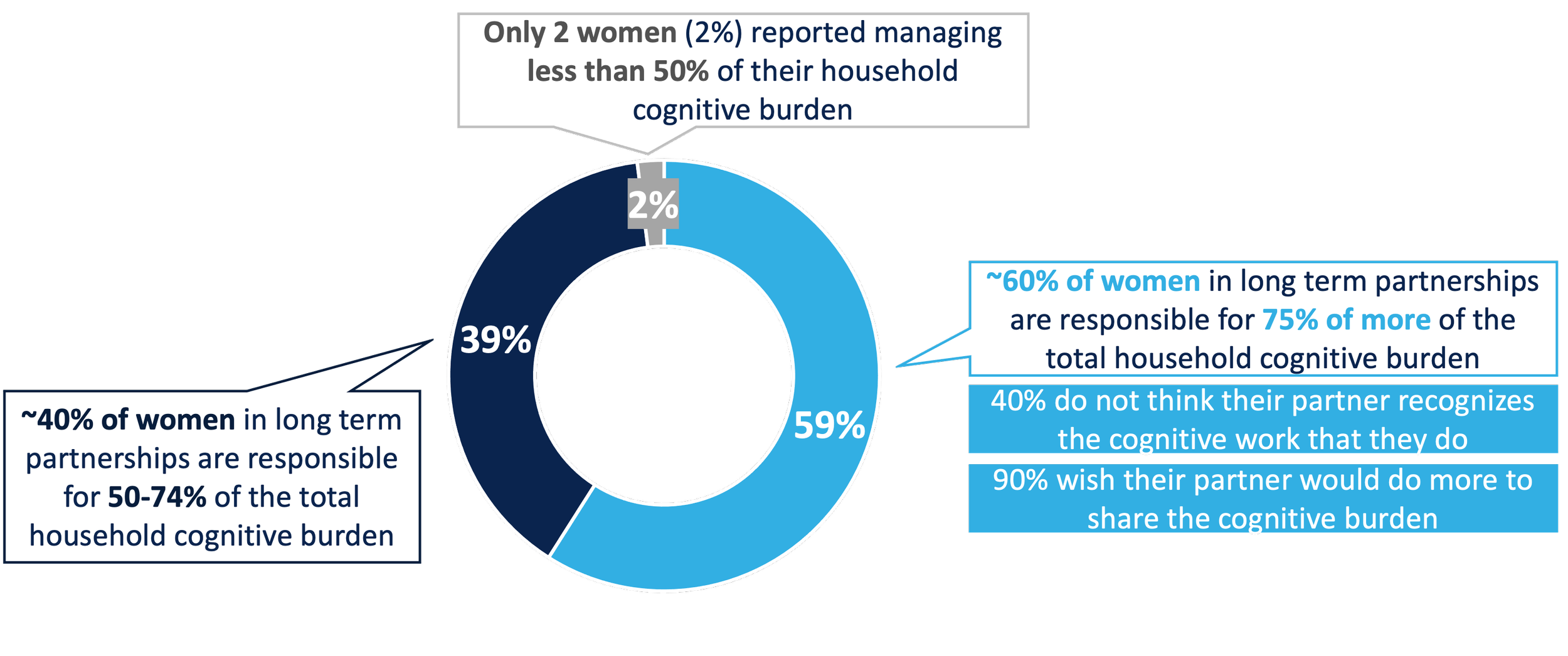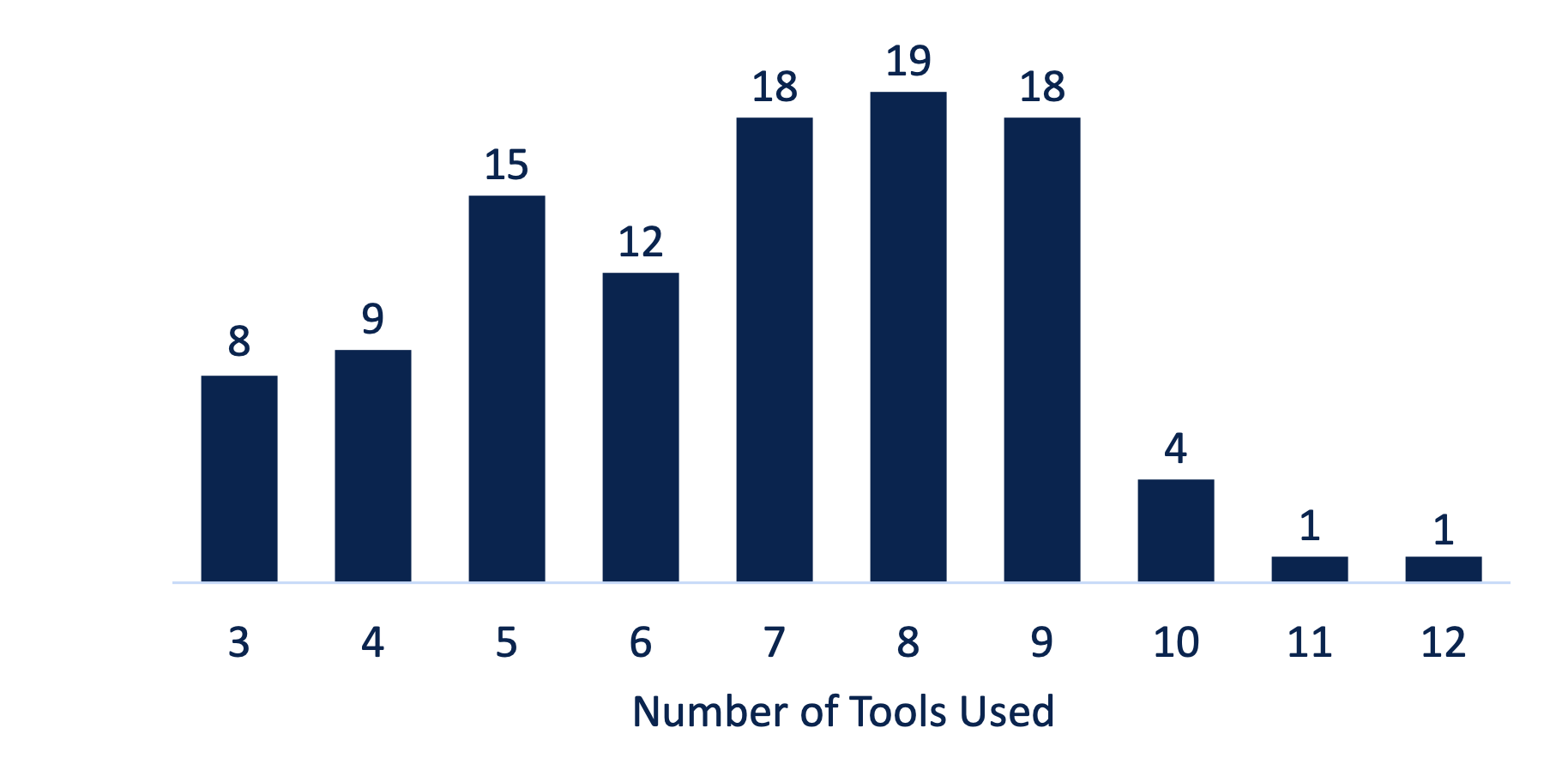We’ve heard from over 100 women, what have we learned?
As I entered my late 20’s I started noticing a shift in the conversations I was having with my female friends. Gone were the days of juicy gossip and exciting crushes on a new man, and in their place were venting sessions about their husbands or rescheduling drinks 4 times because we were both so busy. What changed?
Many of the women in my life seemed stressed, unhappy, and anxious. The more I paid attention, the more I started noticing it was not just within my circle, but a widespread issue. Paying attention turned into researching as I consumed podcasts, articles, and even tik toks diving into the issue, but to be honest, these resources were few and far between. This idea has been given many names - “mental load, invisible labor, cognitive burden,” - but none are trending on social media or common in people’s vocabulary.
How could an issue so pervasive not be more commonly talked about?
After countless conversations with my childhood best friend, Emily, we decided that talking about it was exactly what we would do. We would talk to women – ask them how they feel, why they are stressed, and how they manage that stress. Since then we’ve done countless interviews, phone calls, text messages, and a formal survey to gather more information. To be honest, the results are NOT shocking. Women are managing the majority of the burden in their households, experience constant stress as a result, and do not feel that their efforts are recognized.
So, let’s dive into the takeaways so far:
Splitting the burden: intention and recognition is key
Of women in long term relationships, about ~60% are responsible for 75% or more of the total household cognitive burden. Another ~40% are responsible for between 50-74% of the workload, leaving just 2% (only 2 respondents) that are taking on less than half the load. So, women are doing more - like I said, this is not shocking.
But an uneven split is not always a problem. Partnerships have a lot of moving parts, and no two are the same. If one partner is not working it might make sense for them to take on more responsibility in the home, and they may be ok with that. What is an issue however, is when this uneven split is not recognized or entered into unwillingly.
Of the majority of women taking on more than 75% of the work, 40% feel that that work is not seen by their partner, and a staggering 90% wish that their partner would take on more. This is where problems arise and resentment can form. As one respondent told us, “I actually prefer to do [the planning] myself, I just wish [he] would appreciate it a bit more.”
Overall, there is no “right” number for splitting this work. Some couples want 50-50% splits, while others may prefer 75-25% if that partner is contributing to the household or relationship in other areas. No matter what the number is, both partners need to be aware of the sheer volume of work being done to properly see the breakdown. We need a way to make that invisible work visible and quantifiable.
Women are stressed: what’s driving it?
We asked women about stress levels across a number of aspects of cognitive burden, including managing schedules, meal planning, household chores, event planning and birthdays, childcare, wellness, budgeting, maintenance and repairs, planning travel, and staying in touch with family / friends (phew, just writing it all out makes me exhausted!) We will get into the details, but to start, we calculated an average stress score across all areas to see how stressed different demographics feel by these activities. The takeaways:
Women in long term relationships were more stressed on average than those who are single
Having kids did correlate to higher stress, but was not as impactful as having a partner
Both working and stay at home mothers are equally stressed by managing these personal life responsibilities
Using social media as a tool to manage personal life responsibilities corresponds to higher levels of stress in managing them
Interestingly, while all of these findings were statistically significant, the one with the strongest correlation was number 4, social media. Social media has become incredibly helpful in finding advice, inspiration, and how-tos, but it also is a breeding ground for unhealthy comparison, unrealistic standards, and arguing. Not to mention, creators are incentivized to hold your attention. They get more out of a viewer by keeping your eyes on the page, leading to long winded commentary, controversial takes to provoke interaction, or needless “part 2s” to keep you coming back for more.
What are women using to manage the burden?
While social media was one tool for managing everyday tasks, it was only one of many. On average, women were using more than 7 tools across their various responsibilities, from phone calendars, to paper planners; from paid apps to screenshots on their phones.
The more tools they are using, the less satisfied they feel with the result.
This is a finding that resonates deeply with me. In my life, something that should be as simple as keeping track of loved ones birthdays is a recurring stressor to me. Many of my friends’ birthdays are on Facebook but since some have deleted their accounts, I’m no longer reminded. Others I had on my work calendar, but if their birthday fell on a weekend I was not checking my calendar (and once I left that job, it was all lost.) I found myself constantly being reactive to birthdays by sending a text after I’d seen an Instagram story wishing someone a happy birthday, or calling my own brother 3 days late because I’d lost track of the date during a busy work week.
This is a prime example of how having too many solutions can actually be a bad thing. My management of birthdays was all over the place, meaning I could never fully trust it to not let me down.
What’s next?
These findings are only the tip of the iceberg but have been essential in confirming our hypothesis that women deserve help (REAL help, not just another lifestyle influencer) to manage their burdens. We are currently analyzing the feedback, speaking to women in as many walks of life as we can reach, and developing a technology solution to ease the burden. Instead of 7 tools, we want to give you 1 you can depend on. Instead of superfluous commentary, we want to give you research-based and cited facts. Instead of holding this frustration in silence, we want to give you a tool to recognize and share the burden.
If you’ve found any of this interesting or would like to share your own experience, we would love to hear from you!



